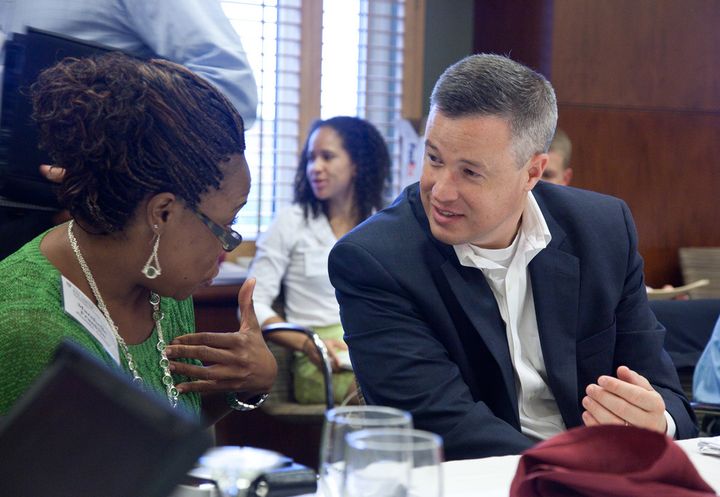3 key lessons help chart a path forward for anyone wanting to support the next phase of the municipal innovation movement.
Over the past decade, I observed the birth of a movement toward innovative, high-performing local governance, and watched it catch fire. Today, thanks to bold leadership, risk-taking and thoughtful investment from across sectors, we have no shortage of proof points that high-performing government can play an outsized role in the economic, social and all-around well-being of residents at scale.

Participants in the Project on Municipal Innovation meet to share lessons from across the country.
As I wrote recently, the municipal innovation field has matured well beyond spreading seeds broadly and seeing what grows. We’re entering a new phase of movement-building, which calls for renewed energy and effort to sustain the progress we’ve made. Three key lessons from recent years help chart a path forward for anyone wanting to support the next phase of this movement:
- We must maintain our intentional support of municipal innovation as a catalyst for change. Too many philanthropic institutions still view the nonprofit as the only catalyst for positive social change. The body of evidence today demonstrates that, in fact, local government can play an outsized role in driving the social and economic outcomes captured in our mission statements. And with philanthropy holding important resources, including human and financial capital, we can’t remain on the sidelines.
- There are inroads to this work for everyone. Regardless of your specific passion, it would likely be better served if local governments were equipped to accelerate positive results. If your organization is committed to racial equity, programs like Racial Equity Here, among others, are working to help government dismantle deep-rooted disparities. If you’re passionate about community engagement, there’s immense need for proven practices that help governments meaningfully connect with residents.
- Communities of practice are invaluable. What was missing in the early days of municipal innovation is still an important lesson today: innovation is more valuable when it’s being shared across leaders and cities. Communities of practice, which allow cities to work together on the same issues, connect leaders with partners in the field whom they can rely on for help, and allow them to leapfrog toward results by avoiding past mistakes and replicating successes. We must intentionally grow and support this model of learning.
Today, a decade of public sector risk-taking backed by philanthropic investment, has shown us what is possible, in cities large and small. The promise of a better America may in fact rest not with cutting-edge social innovators in the nonprofit realm, but in local government with its stable funding streams and long-term outlook. It’s a conclusion we hardly could have imagined just a decade ago. Let’s work to make it true.
This post originally appeared on the Living Cities blog as “#BensTake: Making Order Out of Chaos.”
